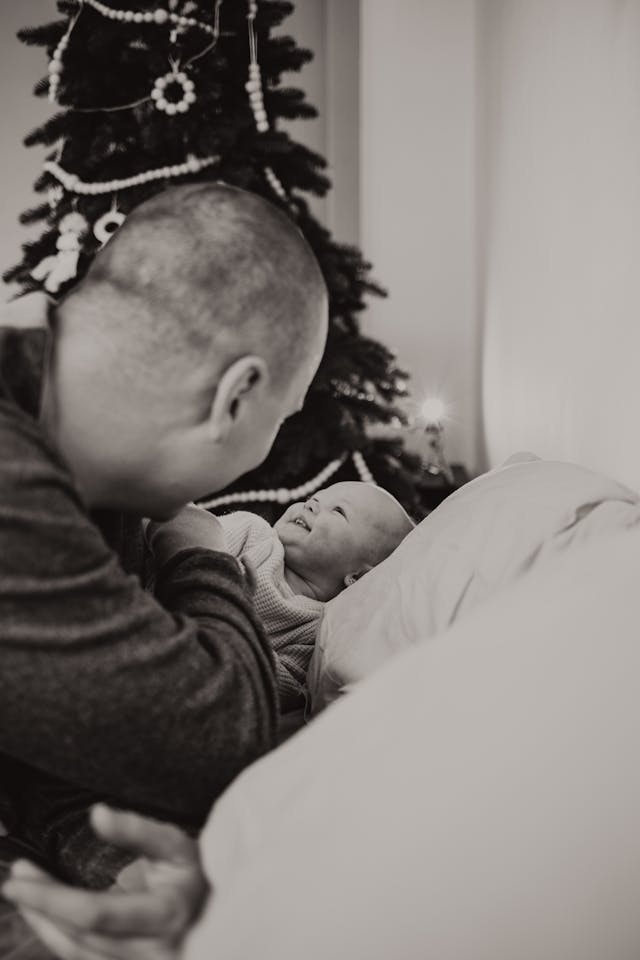A wake window is when your toddler is awake between one nap and the next. Wake windows include everything that happens when your baby or toddler is out of their crib, including feeding, singing songs, spending time outside, playing with toys, and reading books. This article delves into the science behind these windows, what they are by age, how to adjust them, how to create a sleep schedule, practical solutions to common challenges, and even tips for success.
Table of Contents
What Are Newborn Wake Windows?

In a nutshell, a wake window is the period between sleep when your baby or child is awake. Their wake window starts when your baby wakes up and ends when they fall asleep for their nap or night sleep. Wake windows that are too long or too short can mean your baby struggles to sleep (which means less sleep for you, too!). Keep reading to understand the wake windows in your little one better!
The Science Behind Newborn Wake Windows
During a wake window, babies and children experience a slow increase in a chemical called adenosine. This increases their sleep pressure, or sleep drive, which helps them feel tired and fall asleep. The younger your baby is, the quicker they build up this sleep pressure.
Wake Windows by Age

According to the National Sleep Foundation, babies should sleep 12 to 15 hours within 24 hours. However, finding the perfect balance between the amount of sleep and wake time can be challenging. If you follow these wake windows by age and consistent wake time between naps, you will be on the right track to a restful sleep schedule for your baby.
These guidelines help you determine how frequently your child should sleep and give you a healthy range to shoot for.
Listed are the recommended wake windows by age:
- Newborns: 60 to 90 minutes
- 4 to 6-month-olds: 1.5 to 2.5 hours
- 7 to 9-month-olds: 2 to 3.5 hours
- 10 to 12-month-olds: 2.5 to 4 hours
- 13 to 15-month-olds: 2.5 to 4.5 hours
- 16 to 18-month-olds: 4.5 to 5.5 hours
- 18-month-olds and older: 5 to 6 hours
How to Adjust Wake Windows as Your Baby Grows
You can slowly stretch your baby’s wake window by keeping them awake 10-15 minutes longer. You can help your baby connect with you and the environment while they transition to a longer wake window by feeding or distracting them with a story or a song.
Creating a Sleep Schedule Based on Wake Windows
Here is an example of how you can create a sleep schedule based on your baby’s wake windows. You can change the sleeping pattern to suit your own activities or to accommodate their wake windows.
It is:
Number 1
- Feed: An early morning bottle (after 5 a.m.). You can return to sleep or get up to start the day.
- Sleep: Respond to your baby’s tired cues.
Number 2
- Feed: Mid-morning bottle.
- Play: Average awake time is 1.5 – 3 hours. This includes time taken to play and feed.
- Sleep: Respond to your baby’s cues.
Number 3
- 3-Feed: Lunchtime feed.
- Play: average awake time is 1.5 – 3 hours. This includes time taken to play and feed.
- Sleep: Respond to your baby’s cues.
Number 4
- 4-Feed: Mid-afternoon feed.
- Play: Average awake time is 1.5 – 3 hours. This includes time taken to play and feed.
- Sleep: Respond to your baby’s tiredness. They might only need a short nap.
Number 5
- 5-Feed: Evening bottle.
- Quiet time: Bath, then a cuddle, and ready for bed.
- Sleep: Settle for the night. Your baby will still wake for bottles during the night.
Common Challenges and Solutions
Relaxed naps are crucial for your baby’s daily sleep routine. This section addresses some common naptime challenges and offers effective, practical strategies for controlling them.
The Car Seat Nap
- The Problem: It’s a usual scenario: You’re going to the shops, and your baby drifts off to sleep in the car. Accidental naps in the car are a normal but tricky situation for many parents.
- The Solution: Since transferring is usually not practical, the best process is to allow your baby to complete their nap in the car.

Early Morning Wake-up Troubles
- The Problem: Early morning wake-ups can throw a wrench in your baby’s nap plans. When your baby wakes earlier than usual, it disrupts the day’s schedule and can make it challenging to stick to regular nap times.
- The Solution: The answer lies in striking a balance. If your baby wakes up early, slightly adjust the first nap of the day to start earlier than usual. This way, you align with their wake window while hopefully not upending the entire day’s schedule.
Managing Nap Time During Illness
- The Problem: Seeing your little one unwell is challenging; illness can alter their usual sleep routine. They may need more naps, but usually, these aren’t the restful stretches they’re used to. They can wake up more or struggle to settle down because they feel crummy.
- The Solution: During these sniffly times, your primary role is to comfort them while monitoring their sleep habits. It’s okay to offer more soothing cuddles, but try to avoid creating new habits that could linger after they’re feeling better.
Wake Window Mishaps
- The Problem: When your baby is awake between naps – they are vital in establishing a healthy sleep routine.
- The Solution: Wake windows are all about timing. They range depending on your baby’s age and individual needs. For example, a newborn might only be awake for 45 minutes to an hour, while older babies can have wake windows for up to 2 to 3 hours.
Naptime Routines
- The Problem: Skipping or cutting the naptime short routine might seem minor, but it can be pretty unsettling for babies. Just like adults, babies thrive on predictability.
- The Solution: It is important to adhere to a concise yet practical naptime routine. A simple 5-7-minute routine is enough and can work wonders. It can include activities like a gentle lullaby, a quiet story, dimming the lights, and cuddles.
Falling Asleep During Feedings
- The Problem: It’s a scene a lot of parents know all too well: your little one starts dozing off mid-feed. While it’s adorable to see them so relaxed, it can create a habit where your baby associates feeding with sleep, making it tough to fall asleep independently in their crib.
- The Solution: The goal is to gently separate feeding from sleeping. Maintain a light, stimulating environment during feedings to keep your baby engaged and awake. If they start to doze off, gently rouse them and ensure they finish their feed awake.
Baby Nap Refusal
- The Problem: Refusing a nap can be a testing phase for many parents. Babies usually test boundaries by refusing to nap, frequently standing in their crib and protesting loudly.
- The Solution: Handling nap refusal requires stability and understanding. It’s essential to counter your baby’s needs without reinforcing the idea that refusing a nap leads to a reward. If your baby protests, give them a little time to settle themselves.
Nurturing Naptime
Navigating your baby’s naptime is about striking a balance and finding the proper nap routine, which is a process of trial and error. Stay flexible and open to change; what works today might need adjustment tomorrow. The next section gives you tips for more success!
Tips for Success: Making the Most of Wake Windows

How do we do this? Observe! Watch the duration and quality of your baby’s naps and notice how they act! Remember, you know your baby or toddler best – If they’re cranky and struggling, aim for the shorter end of the wake window. Aim for the longer end if they’re alert and active. Set wake signals at the beginning of their wake windows. Change your voice so it’s live and cheery, and say, ”Hello, it is time to get up.“ Then, open the curtains and remove them from their sleeping bag if they’re sleeping in one.
Conclusion
Understanding and following age-appropriate wake windows can remarkably improve your baby’s mood, sleep quality, and overall growth. Concentrating on their sleep cues and adjusting their schedule suitably will foster healthy sleep habits that will help you and your baby. If you struggle to get your baby to stay asleep and nothing works, your baby might be experiencing a temporary sleep regression. Knowing the difference is important. Are you ready to create a sleep schedule that works?
Start by observing a little one’s awake window transform their nap routine!


